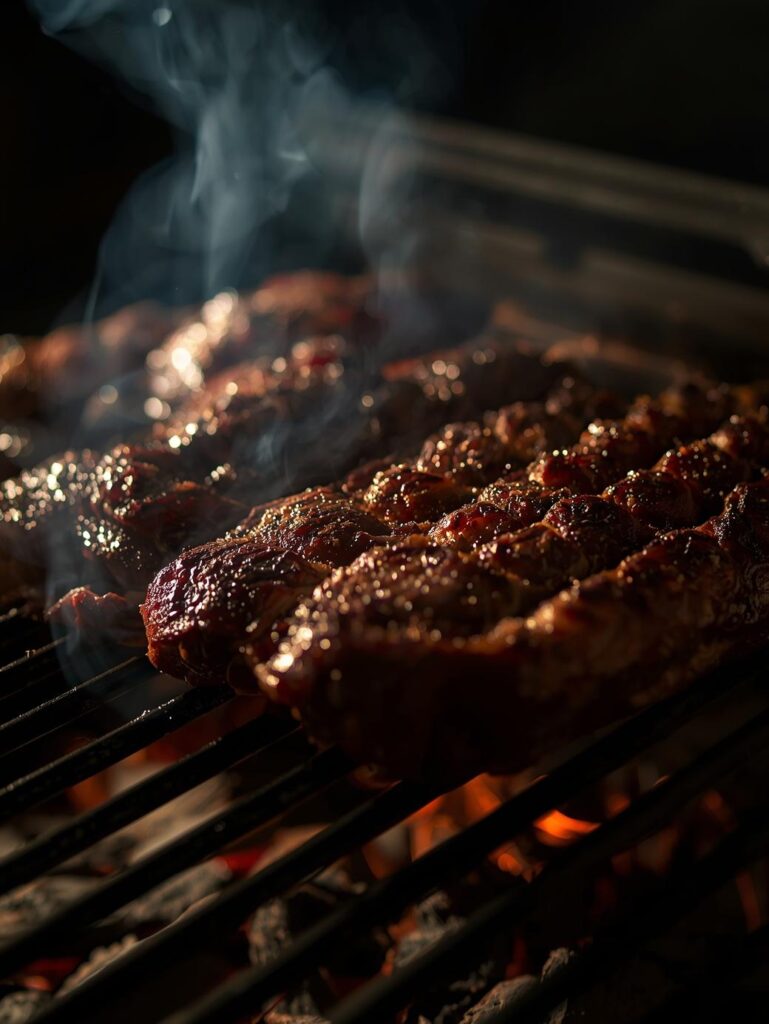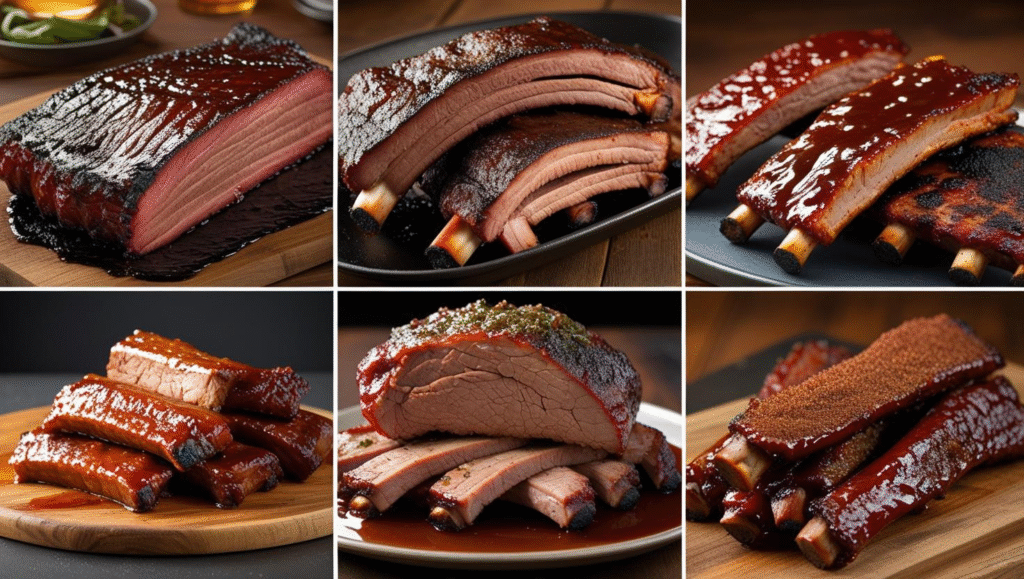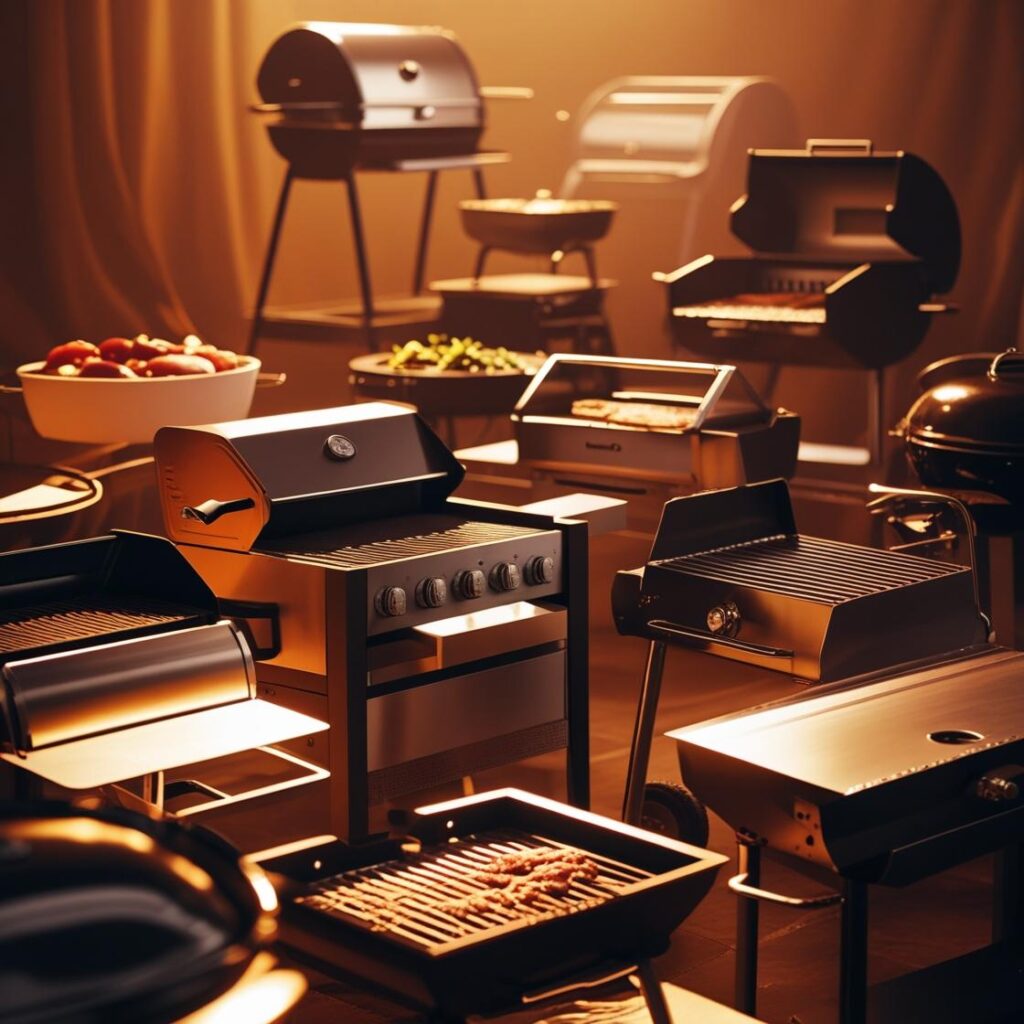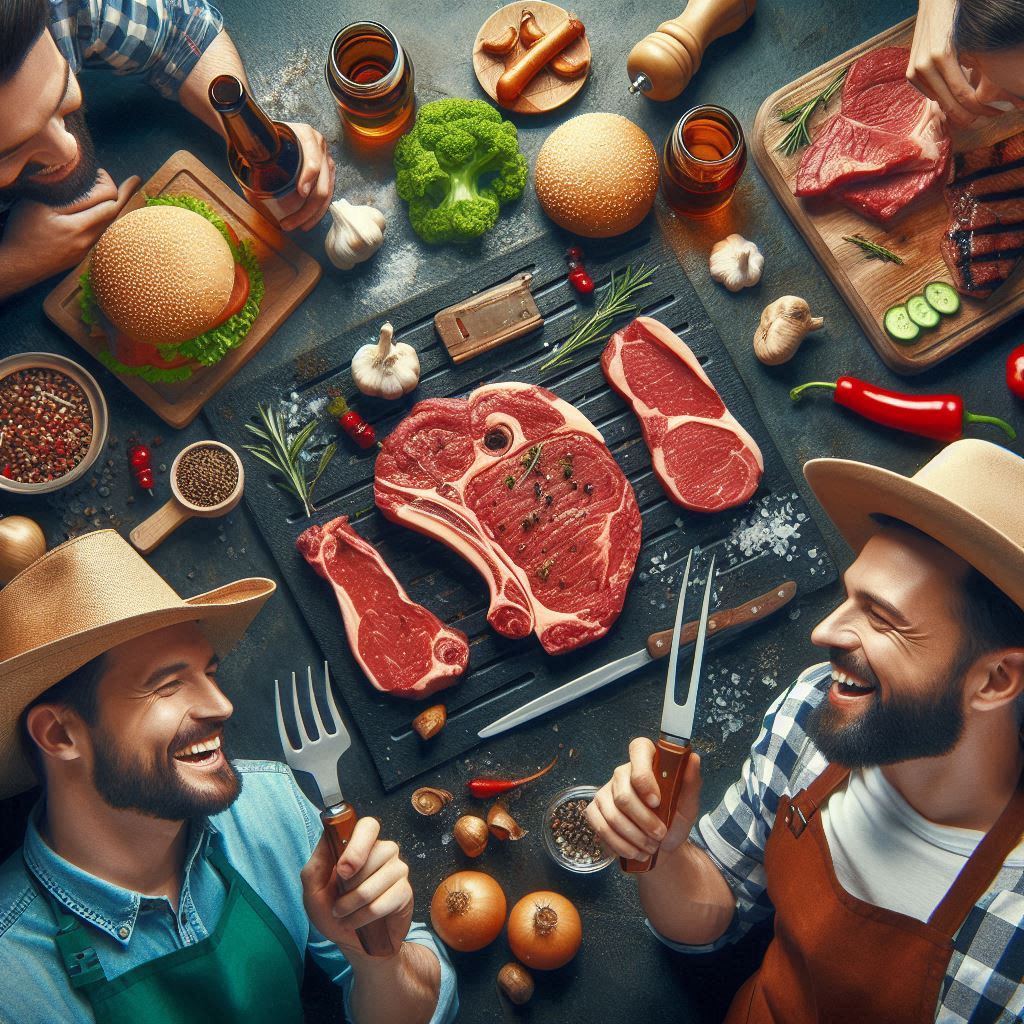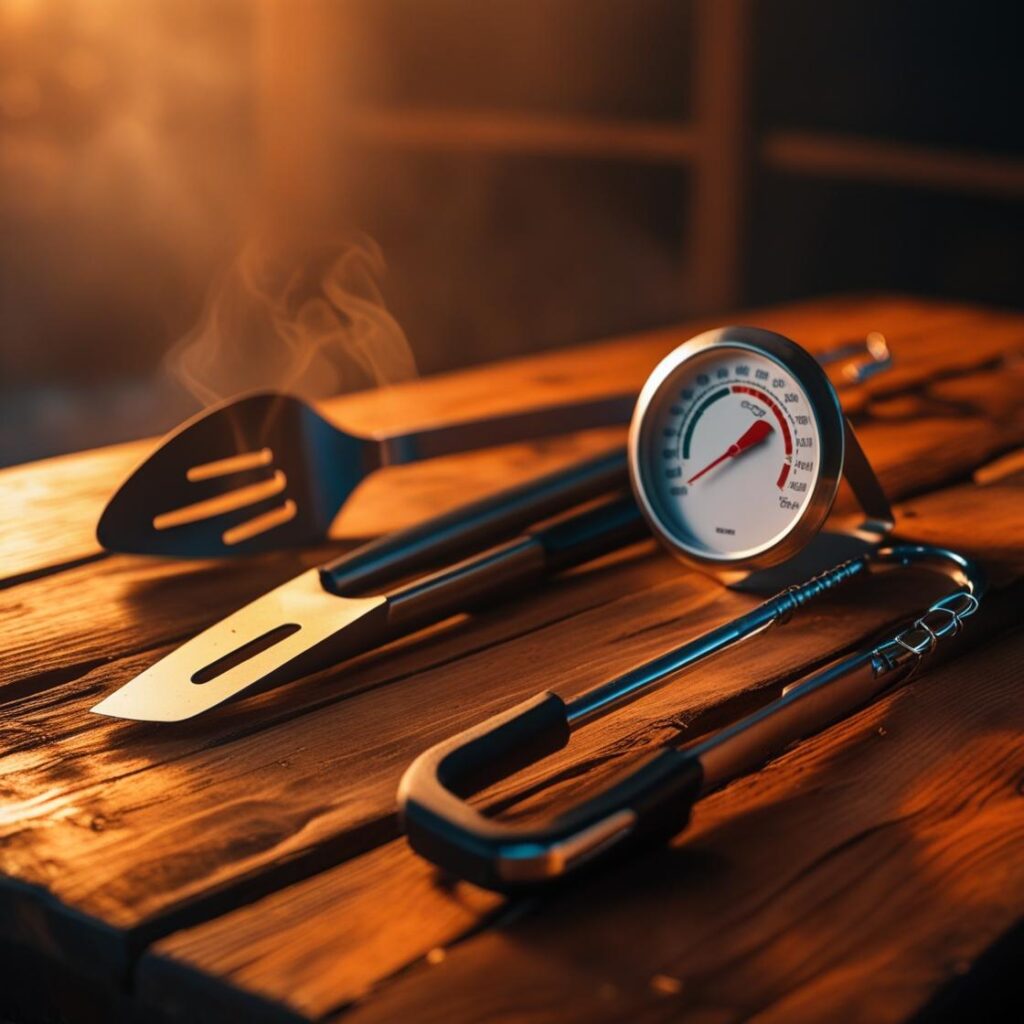8 Wood Smoking Errors That Make Meat Bitter – Simple Solutions
There are few things more satisfying than a perfectly smoked piece of meat. The deep, rich color, the tender texture, and the complex, savory flavor from the smoke itself. But for many home cooks, the dream of a perfect smoke ring and a sweet, smoky taste turns into a nightmare of bitter, acrid, and unpleasant meat. The culprit is almost always the smoke itself. These common wood smoking errors can destroy the juiciness and flavor of your meat, leaving you with an inedible result.
This guide will walk you through the 8 wood smoking errors that lead to a harsh, bitter flavor. We’ll explain the science behind why these mistakes happen and provide simple, actionable solutions to fix them. By mastering these smoking tips, you’ll learn how to get a clean smoke that enhances your meat’s flavor, rather than ruining it.
The Difference Between Good Smoke and Bad Smoke
The first step to fixing smoking mistakes is to understand the difference between good smoke and bad smoke.
- Good Smoke: This is often referred to as “thin blue smoke.” It’s almost invisible, with a faint bluish tint. It has a sweet, clean aroma that smells delicious. This is the sign of a hot, clean fire and proper combustion.
- Bad Smoke: This is “dirty” or “billowing white smoke.” It’s thick, opaque, and smells acrid and harsh. It’s filled with uncombusted particles, carbon, and other impurities that stick to your meat and give it a truly awful, bitter flavor.
The goal of every smoking session is to produce that perfect thin blue smoke.
8 Wood Smoking Errors That Make Meat Bitter (and How to Fix Them)
1. Using the Wrong Kind of Wood
This is one of the most fundamental wood smoking errors that can ruin your meat before you even start.
- Why it happens: Different wood species have different flavor profiles and densities. Some woods, like mesquite, have a very strong, pungent flavor that can easily overwhelm more delicate meats. Others, like fruitwoods (apple, cherry), are much milder. Using the wrong wood for the wrong meat can lead to an off-putting taste.
- Simple Solution: Match the wood to the meat. Use strong woods (oak, hickory, mesquite) for strong-flavored meats like beef. Use mild woods (apple, cherry, pecan) for more delicate meats like pork, poultry, or fish.
2. Using Too Much Wood
Beginners often think that more smoke equals more flavor. This is one of the most common smoking mistakes and a guaranteed way to get bitter smoked meat.
- Why it happens: A fire needs oxygen to burn cleanly. Piling too many wood chunks or chips on top of a fire smothers it, causing it to smolder rather than combust. This creates that dirty, billowing white smoke that deposits a foul flavor on your food.
- Simple Solution: Start with just one or two small wood chunks. Wait until they are fully lit and producing that thin blue smoke before adding another one. You only need a small, consistent amount of smoke to get a great flavor.
3. Cooking with “Dirty” Smoke
As mentioned above, thick, white smoke is the enemy of good BBQ.
- Why it happens: This dirty smoke is the result of incomplete combustion. It’s a sign that your fire is not getting enough oxygen or that the wood is too wet or too much has been added at once.
- Simple Solution: Give your smoker time to “settle in.” Wait until your fire is established and the temperature is stable before you add your meat. If you see thick white smoke, adjust your vents to increase airflow and allow the fire to burn cleanly.
4. Soaking Wood Chips or Chunks
This is a widely circulated piece of smoking tips advice that is actually a myth and one of the biggest wood smoking errors.
- Why it happens: The goal of smoking is to produce smoke, not steam. Soaking wood chips or chunks prevents them from combusting quickly. Instead, they steam and produce a cloudy, gray vapor that carries an unpleasant, bitter flavor.
- Simple Solution: Do not soak your wood. Place dry wood directly on your heat source. Dry wood will catch fire and combust cleanly, producing that desirable thin blue smoke.
5. Using Barky or Wet Wood
The quality of your wood matters just as much as the quantity.
- Why it happens: The bark of a tree contains high levels of tannins and other compounds that, when burned, produce a harsh, acrid, and bitter flavor. Wet wood, especially wood that is not “seasoned” (dried properly), will also smolder and create dirty smoke.
- Simple Solution: Use kiln-dried, seasoned wood that is free of bark. Buy from a reputable source that sells smoking wood specifically.
6. Not Managing the Grill’s Airflow
The vents on your smoker are not just for temperature control; they are for managing the air that fuels your fire.
- Why it happens: If you choke off your air vents to lower the temperature, you’re also starving the fire of oxygen. This leads to incomplete combustion and that dreaded dirty, white smoke.
- Simple Solution: Keep your vents open enough to allow for a clean, stable fire. To control temperature, use the vents in conjunction with a precise setup, as detailed in our 7 grill temperature zones guide. A good how to smoke meat lesson starts with understanding airflow.
7. Placing Meat Over Direct Heat
This is a classic rookie mistake that can be a source of a bitter flavor.
- Why it happens: Placing meat directly over a fire can cause the fat to render and drip onto the heat source. This burning fat creates an acrid, bitter smoke that coats the meat.
- Simple Solution: Always use an indirect heat setup for low-and-slow smoking. Place your heat source on one side of the smoker and your meat on the other, or use a water pan as a barrier. This is a crucial concept for all types of BBQ, as we cover in our guide on 5 Thanksgiving turkey methods compared, especially for the smoking section.
8. Adding Wood at the Wrong Time
The period in which you add wood can significantly impact the final flavor.
- Why it happens: Meat absorbs smoke flavor most efficiently in the early stages of a cook when its pores are open and its surface is cool and moist. Adding wood late in the cook can just deposit that bitter smoke on the meat’s exterior.
- Simple Solution: Do the majority of your smoking in the first 2-4 hours of the cook. After that, you can maintain the temperature with just heat.
| Wood Smoking Error | Why It Happens | Simple Solution |
| 1. Wrong Wood | Flavor clashes with the meat. | Use mild woods for light meats, strong woods for beef. |
| 2. Too Much Wood | Smothers the fire, creates dirty smoke. | Start with 1-2 small chunks; add as needed. |
| 3. Dirty Smoke | Incomplete combustion. | Wait for thin blue smoke before adding meat. |
| 4. Soaking Wood | Creates steam, not smoke. | Use dry wood directly on the fire. |
| 5. Bark or Wet Wood | Contains bitter compounds. | Use clean, seasoned, bark-free wood. |
| 6. Poor Airflow | Starves the fire of oxygen. | Use vents to regulate temperature and air. |
| 7. Direct Heat | Burning fat creates bitter smoke. | Use an indirect heat setup. |
| 8. Bad Timing | Meat absorbs smoke best early on. | Do the majority of your smoking in the first 2-4 hours. |
Conclusion
Mastering the art of smoking is not about the amount of smoke you produce but the quality of it. By understanding and avoiding these 8 wood smoking errors, you can transform your BBQ from a bitter disappointment into a smoky, savory masterpiece. The secret to great flavor lies in a clean, consistent fire and a little bit of patience. So, the next time you fire up your smoker, remember these smoking tips, and get ready to enjoy the most flavorful meat of your life.
FAQ: 8 Wood Smoking Errors That Make Meat Bitter
1. What’s the best wood for a beginner to use?
A great wood for beginners is a mild fruitwood like apple or pecan. They provide a delicious, balanced smoke flavor that pairs well with almost any meat without being too overpowering.
2. How can I tell if my wood is seasoned?
Seasoned wood is wood that has been properly dried for at least 6-12 months. It will be lighter in weight, and it will have cracks or splits in the ends. It also makes a “clacking” sound when you hit two pieces together.
3. My smoker is producing white smoke. How do I fix it?
Open the vents to increase the airflow and allow the fire to get more oxygen. If it doesn’t clear up, you may have added too much wood at once.
4. What’s the biggest takeaway from this guide?
The biggest takeaway is that when it comes to smoking, “less is more.” You only need a small amount of clean, blue smoke to get a great flavor. More smoke will almost always lead to bitter smoked meat.
5. What is the “smoke ring”?
The “smoke ring” is a pink ring on the exterior of the meat just below the bark. It is created by a chemical reaction between the meat’s myoglobin and the gases from the wood smoke. It’s a sign of a successful smoke, but it doesn’t guarantee a good taste.
6. Can I use wood pellets instead of chunks?
Yes, wood pellets are an excellent option, especially for pellet smokers. They burn very cleanly and provide a consistent, predictable smoke flavor.
7. What are some good smoking tips for a long cook?
For a long cook, use wood chunks instead of chips. Chunks burn slower and more consistently, providing a stable source of smoke over a long period without needing constant attention.

